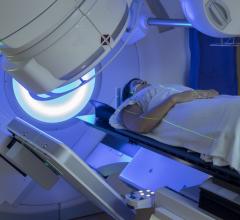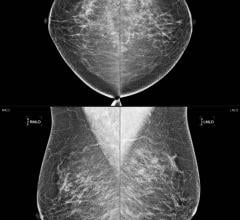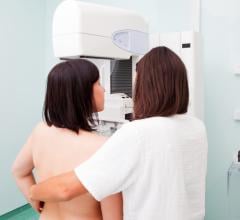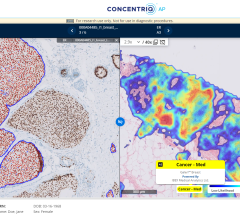BLOG: Improving Care Quality and Outcomes with Workflow-Integrated AI

Beyond its current and potential benefits in a growing number of clinical use cases, workflow-integrated artificial intelligence (AI) is enabling a broader data-driven approach to the practice of radiology itself. It’s an approach that acknowledges the centrality of diagnostic imaging in the detection and treatment of disease and its essential role in improving healthcare costs and outcomes.
Most immediately, AI-powered diagnostic models, natural language processing, and clinical analytics tools can drive continuous quality improvement programs. Even more, they can provide a collaborative, value-based framework for providers, payers, and other stakeholders to use radiology data to optimize and reward high-quality practices and promote value-based care.
“Real-time intelligence in the radiology workflow affects the entire patient journey,” said Karen Holzberger, senior vice president and general manager of diagnostic solutions at Nuance Communications. “It begins with the initial encounter and continues when an imaging exam is ordered, through protocolling, image interpretation and reporting, provider communication, patient treatment and compliance with follow-up recommendations.”
Improving Follow-up Imaging Compliance and Patient Outcomes
When a provider orders diagnostic imaging related to a primary complaint, the radiologist interpreting the exam and reporting findings may also include incidental findings. About 10 percent of radiology reports recommend follow-up imaging for incidental findings. One of the most common is the presence of lung nodules. Follow-up imaging is indicated because lung cancer is the leading cause of cancer death in the US. However, up to 70 percent of recommended exams are not completed, resulting in delayed treatment and an increase in unfavorable outcomes.
AI-powered tools are addressing missed follow-ups to improve clinical and financial outcomes. One method uses structured language to improve report clarity and communication with referring physicians and include findings and recommendations in the EHR for downstream monitoring and treatment.
Nuance PowerScribe Follow-up Manager automates follow-up tracking and compliance. It uses advanced language understanding to analyze the unstructured text, words, phrases, and data in existing reports to identify follow-up recommendations. It automatically tracks the recommendation to ensure the exam is completed within the prescribed timeframe. If the exam is not completed in time, PowerScribe Follow-up Manager can proactively alert the referring physician or patient to ensure the needed exam is performed.
“You can start bringing these patients back in more quickly, working in partnership with the care team, the ordering provider, and ultimately the patient,” Holzberger said.
Improved Performance, Outcomes, and Costs with AI Tools
Robust AI-powered analytics help radiologists track overall performance and improve financial outcomes based on clinical evidence. For example, data analysis can inform workload balancing and indicate performance by modality, radiologist, report quality, and other factors in continuous quality improvement programs. Radiology innovators also are exploring ways to share performance data with referring providers, payers, and other stakeholders. The goal is to recognize high-quality practices and document expertise in various modalities, clinical specialties, or other areas, not to police radiologists by calling out errors. Radiology practices and departments benefit through increased business and reimbursements and lower exposure to possible malpractice claims. Patients and providers benefit from improved outcomes and lower healthcare costs. The combination of radiology data and workflow-integrated AI-powered tool creates this holistic, structured, and collaborative approach to value-based care.
AI-powered data analytics can also accelerate AI adoption. Users can create their own real-world data sets to test how AI models will work in their environment and to drive ongoing surveillance of model performance.
“All of those examples show how AI is powering everyday clinical tools and becoming essential for improving radiology efficiency, quality, physician satisfaction, and financial integrity. It acknowledges the central role of diagnostic imaging inpatient care and ultimately healthcare costs and patient outcomes,” Holzberger said.
Radiologist Feedback Drives AI Development
The key to the successful adoption of AI is ensuring that it seamlessly augments radiologists’ training, expertise, and reporting workflows. Radiologists will review AI-generated outputs and decide when and how to incorporate the results in their reports. By supporting a workflow-integrated AI platform with a feedback loop for radiologists to evaluate model usability and performance, AI developers become part of the collaborative radiology-driven quality framework.
“Increased usage drives performance improvements,” Holzberger said. “It’s a vital factor in the ongoing success of AI models and services, and ultimately the success of the radiologists using them. In the end, radiologists will determine the development, adoption, and success of AI just as they have with the arrival of new technologies in the past.”
Editor’s note: This is the final blog in a four-part series about real-time intelligence in the radiology workflow, to be published monthly. The first blog, Emerging AI Technologies Provide Value Throughout the Patient Journey, can be found here; the second blog, Real-time Intelligence: Optimizing Workflow through Planning and Preparation, can be found here; and the third blog, Real-time Intelligence in Reporting and Communication, can be found here. To learn more, visit nuance.com/healthcare/diagnostics-solutions


 August 29, 2024
August 29, 2024 








